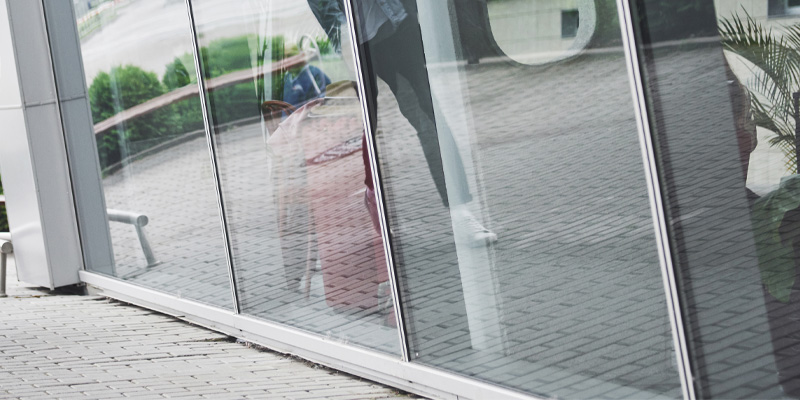Switchable glasses have become increasingly popular as a modern solution for controlling window transparency. In this article, we will provide an honest review of the pros and cons of switchable glasses, helping you make an informed decision about their suitability for your needs.
What Are Switchable Glasses?
Switchable glasses, also known as smart or electrochromic glasses, are advanced glazing materials that have the ability to change their transparency or tint in response to an applied electric current. These glasses offer a convenient and efficient alternative to traditional blinds, curtains, or shades for privacy control and light management.
How Do Smart Glasses Work?
Smart glasses consist of multiple layers, including a conductive film, an electrochromic layer, and an electrolyte. When an electric current is applied, ions migrate within the glass, causing the electrochromic layer to change its opacity or colour. By controlling the current flow, the transparency of the glass can be adjusted from transparent to translucent or even completely opaque.
Pros and Cons of Switchable Glasses

It, also known as smart glasses or electrochromic glasses, have gained popularity for their ability to change from transparent to opaque at the touch of a button. This cutting-edge technology offers several advantages and disadvantages, making them a fascinating option.
Let’s explore the pros and cons of switchable glasses:
Pros of Switchable Glasses
They offer several benefits that make them an attractive option for various applications.
Here are the Pros of Switchable Glasses to consider:
Convenience and Versatility
These glasses provide an easy and convenient way to control the amount of light and privacy in space. With a simple flip of a switch or push of a button, you can instantly transform the glass from transparent to opaque, offering immediate privacy when needed. This versatility makes them an excellent choice for environments that require flexibility, such as offices, conference rooms, hospitals, and residential buildings.
Energy Efficiency
One of the significant pros of switchable glasses is their ability to regulate heat and light transmission, leading to improved energy efficiency. By adjusting the transparency of the glass, you can effectively control the amount of solar heat gain and glare, reducing the reliance on artificial lighting and air conditioning systems. This can result in energy savings and a more comfortable indoor environment.
Maintenance friendly

Switchable glass boasts excellent maintenance-friendliness, making it a top choice for various applications. With fewer maintenance requirements, users can enjoy uninterrupted privacy control and energy-efficient benefits for a more sustainable and hassle-free experience.
Privacy Control
They offer a high level of privacy control, allowing you to switch between transparent and opaque states as desired. This feature is particularly beneficial for spaces where privacy is crucial, such as bathrooms, bedrooms, and meeting rooms. With these glasses, you can enjoy unobstructed views when needed and maintain privacy when desired, eliminating the need for traditional window coverings.
UV Protection
These glasses have the ability to block harmful ultraviolet (UV) rays, protecting your skin and furnishings from sun damage. The electrochromic layer in these glasses can significantly reduce the transmission of UV radiation, minimizing the risk of fading or deterioration of interior materials such as furniture, carpets, and artwork. This UV protection feature makes smart glasses an excellent choice for spaces with valuable or light-sensitive items.
Aesthetics
They add a touch of modernity and sophistication to any space. With their sleek and contemporary appearance, these glasses can enhance the overall aesthetic appeal of a building or room. These glasses are available in various designs and can be customized to meet specific architectural and interior design requirements, making them a versatile choice for both residential and commercial applications.
Cons of Switchable Glasses

While switchable glasses offer numerous advantages, it’s important to consider their drawbacks before making a decision.
Here are the Cons of Switchable Glasses to keep in mind:
Cost
One of the primary cons of switchable glasses is their cost. Switchable glass technology is still relatively new and advanced, which makes it more expensive compared to conventional window glazing options. The initial investment for these glasses can be higher, especially for larger or multiple windows. However, it’s essential to consider the long-term benefits and energy savings that can offset the initial expenses.
Power Requirements
They require a power source to operate, typically in the form of electricity. This reliance on electricity can be a disadvantage in case of power outages or situations where the power supply is limited. However, some of these glasses offer alternative power options, such as battery backups or solar panels, which can mitigate this concern to some extent.
Conclusion
Switchable glasses offer numerous benefits, including convenience, energy efficiency, privacy control, UV protection, and aesthetic appeal. However, they also come with some drawbacks, such as the initial cost, power requirements, limited transparency options, transition speed, and maintenance considerations. It’s important to weigh these pros and cons of switchable glasses carefully and assess whether they align with your specific needs and budget.
FAQs
Yes, You can use them in residential settings, and they offer added convenience and privacy control. They are commonly installed in bathrooms, bedrooms, and living areas to provide flexible transparency options.
Absolutely. You can use them in commercial buildings such as offices, hotels, hospitals, and conference centres. They offer versatility, energy efficiency, and privacy control, making them suitable for various applications.
Yes, You can install them in existing window frames. They can be retrofitted into the current window system or integrated into new construction projects, providing a seamless solution for controlling transparency.
These glasses already provide glare control by adjusting their transparency. However, if additional glare reduction is required, these glasses can be combined with tinted films or coatings to further enhance their performance.
The lifespan can vary depending on the manufacturer and usage. On average, they are designed to last for several years with proper maintenance and care. It's important to follow the manufacturer's guidelines and recommendations to ensure optimal longevity.





